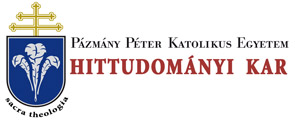Folia Theologica 22. (2011)
Szuromi Szabolcs Anzelm O.Praem.: Medieval Canonical Sources and Categories of Singular Administrative Acts
MEDIEVAL CANONICAL SOURCES AND CATEGORIES ... 117 nates at the end of the 5th, beginning of the 6th century/3 and the Collectio Quesneliana (PL LVI, e.g., Paris BN lat. 1454), which was compiled probably at the beginning of 6th century in Rome.53 54 Therefore the death of the legislator of a concrete law did not abrogate the effect of the legal norm. In contrast, the binding force of a precept was that it would only remain in effect with respect to subjects until the end of the legislator's life, unless the issuing authority had disposed otherwise. A precept bound the person not only within the area of the competence of the giver of the precept - for it is an act linked to the person or office - but everywhere, as is the case also in canon 52 of the CIC now in effect.55 The other meaning of precept included an extra-judicial procedural category. According to this, in case the cleric committed a grave crime, and persisted in it even after receiving two admonitions of the ordinary, the ordinary had the right to take measures against him directly, in the form of a precept - that is, without separate judicial process - in order to avert danger to the common good of the Church. From this kind of praeceptum is formed the penal precept, that is, praeceptum poenale (i.e. CIC can. 1319).56 III. Rescript (Rescriptum) Rescriptum is derived from the Latin verb re-scribere (to write back, to answer), and like praeceptum it is one of the types of decrees from the age of the Caesars which has been in use since the reign of Emperor Hadrian. The Caesar issued such a decree in answer to a request addressed personally to him, and in this he gave the frameworks within which the lower grade tribunal was permitted to pass judgement in the concrete case (i.e. procedure with rescriptum).57 53 Gaudemet, J., Les sources du droit de l'Église en Occident du IIe au VIIe siècle, Paris 1985. 134-137. Erdő, P., Storia déllé fonti del diritto canonico, 50-53. SzuROMi, Sz. A., Medieval Canon Law - Sources and Theory (Bibliotheca Instituti Postgradualis Iuris Canonici Universitatis Catholicae de Petro Pázmány nominatae III/12), Budapest 2009. 58-70. 54 Gaudemet, J., Les sources du droit de l'Église en Occident, 133. 55 Haering, S. - Schmitz, H. (ed.), Diccionario enciclopédico de Derecho Canónico, 679. 56 Labandeira, E. - Miras, J., El precepto penal en el CIC 83, in Ius Ecclesiae 3 (1991) 671-690; cf. Erdő, P., Egyházjog, 608. 57 Földi, A. - Hamza, G., A római jog története és institúciói, 92.
